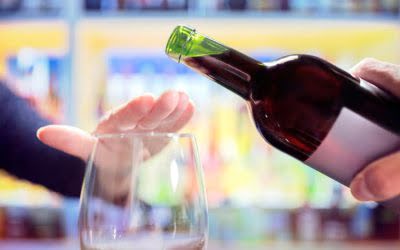Content
However, it is crucial to make a referral to the EAP in the case of an employee with a known alcohol problem. Although you are not diagnosing the problem, you are dealing with employee performance and conduct and, possibly, alcohol-related misconduct such as using, possessing, or being under the influence of alcohol at work. Sometimes, the employee will contact the EAP on his or her own. However, in some cases, the employee will be referred by you because you have noted a decline in the employee’s conduct, attendance, or performance and/or seen actual evidence of alcohol use or impairment at work. Alcohol recovery is a process—one that often involves setbacks. A drinking relapse doesn’t mean you’re a failure or that you’ll never be able to reach your goal.

You are about to enter a site for U.S. healthcare professionals only. Click “Continue”
below to confirm that you’re a licensed U.S. healthcare professional and wish to proceed. Common side effects of VIVITROL in clinical studies included nausea, sleepiness, headache, dizziness, vomiting, decreased appetite, painful joints, muscle cramps, cold symptoms, trouble sleeping, toothache. The same result was not seen in patients who were still drinking at the start of the study. Continually facing the consequences of alcohol dependence can be a challenge, but you are not alone. NCDs do not contain claims processing information like diagnosis or procedure codes nor do they give instructions to the provider on how to bill Medicare for the service or item.
Who is at risk for alcohol use disorder?
They also advise employees of their rights and the procedures in such cases. They do not obtain confidential information from the EAP nor do they independently approach the employee regarding the problem. Consider staging a family meeting or an intervention, but don’t put yourself in a dangerous situation. Research the kinds of treatment that are available and discuss these options with your friend or family member.
The U.S. Food and Drug Administration (FDA) has approved three medications for treating alcohol dependence, and others are being tested to determine whether they are effective. Benzodiazepines are commonly prescribed drugs to help with the negative side effects of alcohol withdrawal as well as reduce possible seizures. The purpose of Benzodiazepines is to slow down the central nervous system, thus providing a calming sensation and treating insomnia, muscle spasms, and anxiety. Get professional help from an online addiction and mental health counselor from BetterHelp. After a screening questionnaire has identified problem drinking, the physician may question the patient further to determine the severity of alcohol misuse. The physician may try brief intervention and/or suggest AA, or refer the patient to an addiction specialist.
Post Treatment
This limit (five days) may be extended in an individual case where there is a need for a longer period for detoxification for a particular patient. Alcoholism often goes undiagnosed; the rate of screening for alcohol consumption in health care settings remains lower than 50 percent.4 Some patients also may withhold information because of shame or fear of stigmatization. All too often, patients, particularly the elderly, continue to be treated symptomatically for alcohol-related conditions without recognition of the underlying problem (Table 1). The Provider Locator is searchable by ZIP code or by city and state. Alkermes is not responsible for, and the Provider Locator is not intended as a tool for, verifying the credentials, expertise, abilities or quality of care of any healthcare provider included in the Provider Locator. Inclusion in the Provider Locator does not imply referral, recommendation or endorsement nor does omission in the Provider Locator imply Alkermes’ disapproval.
- Hospitals may also provide structured inpatient alcohol rehabilitation programs to the chronic alcoholic.
- The severity of AUD ranges from mild to severe, and symptoms have the potential for recurrence and remission.
- Any alcohol addiction treatment program should be customized to your unique problems and situation.
Dr. Sinclair’s research has been published in the peer-reviewed journals Alcohol and Alcoholism and the Journal of Clinical Psychopharmacology. The COMBINE study found that combining another alcohol-deterrent drug Campral (acamprosate) with the medical management program did not improve outcomes. Campral did not perform better than the placebo or dummy pill. This finding stumped researchers since previous studies performed in Europe using Campral had yielded positive treatment outcomes.
Understanding Your Condition
Your treatment setting will depend on your stage of recovery and the severity of your illness. You may need inpatient medical (hospital), residential rehabilitation (rehab), outpatient intensive therapy or outpatient maintenance. It’s also called alcohol dependence, alcohol addiction or alcohol abuse. This is not an uncommon concern, but the short answer is “no.” All medications approved for treating alcohol dependence are non-addictive. These medicines are designed to help manage a chronic disease, just as someone might take drugs to keep their asthma or diabetes in check.

Many treatment plans begin with a detoxification program to help treat your withdrawal symptoms after you stop drinking alcohol. However, if you are a daily or heavy drinker, quitting alcohol without medical supervision can be dangerous. People with alcohol use disorder (AUD) or alcoholism can experience severe withdrawal symptoms that can be deadly.
All Federal Employee Health Benefit Plans have some kind of coverage; however, that coverage is limited. The EAP counselor and the employee benefits representative will have information on health benefits coverage. Employees should direct any questions to one of these resources.
- Replacing unhealthy habits with a healthier lifestyle can ease withdrawal symptoms and help keep cravings at bay.
- Alcohol hallucinosis causes hallucinations that usually occur within 12 to 24 hours after a person’s last drink and may last as long as two days.
- If the patient answers in a certain way, the doctor may then use a standardized questionnaire to find out more.
- Not any one of these signs means that an employee is an alcoholic.
Other things, such as having low self-esteem or being impulsive, may raise the risk of alcohol use disorder. Alcoholics Anonymous is available almost everywhere and provides a place to openly and non-judgmentally discuss alcohol problems with others who have alcohol use disorder. Research shows that most people who have alcohol problems are able to reduce their drinking or quit entirely. Professionals in the alcohol treatment field offer sober house advice on what to consider when choosing a treatment program. Ultimately, choosing to get treatment may be more important than the approach used, as long as the approach avoids heavy confrontation and incorporates empathy, motivational support, and a focus on changing drinking behavior. Alcohol hallucinosis causes hallucinations that usually occur within 12 to 24 hours after a person’s last drink and may last as long as two days.
Severe AUD is sometimes called alcoholism or alcohol dependence. The one that’s right for you depends on your situation and your goals. Many people find that a combination of treatments works best, and you can get them together through a program. Some of these are inpatient or residential programs, where you stay at a treatment center for a while. Others are outpatient programs, where you live at home and go to the center for treatment. Medicines are usually used with talk therapy and support groups to treat alcohol use disorder.

